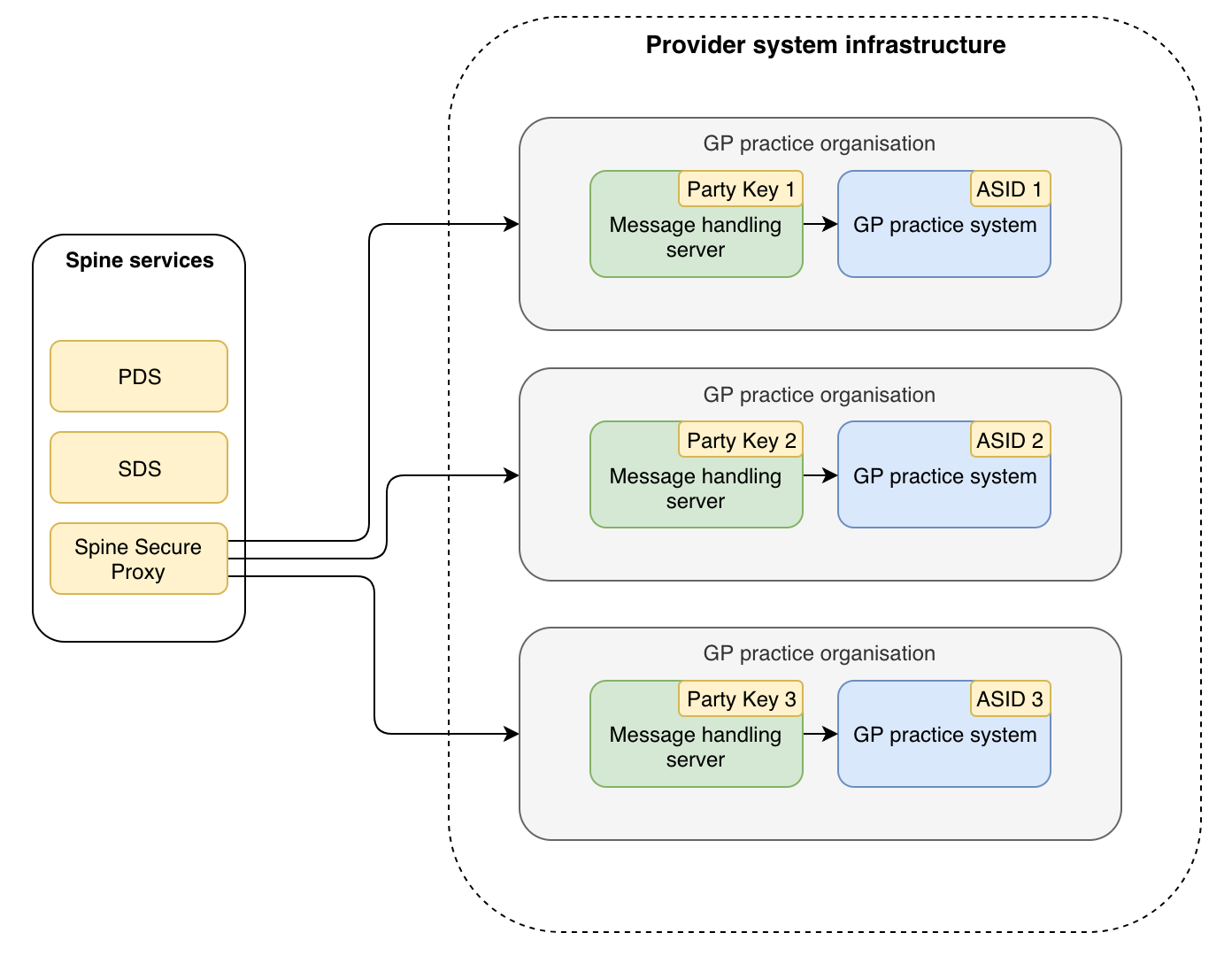Consumer topologies
Consumer system - shared MHS

Several consumer systems connecting to GP Connect via a shared message handling server.
This is a typical deployment for an area based or regional portal, where a central system/TIE (Trust Integration Engine) acting as the message handling server connects to Spine for multiple organisations.
Please note:
- each consumer system using GP Connect MUST have a unique ASID for each organisation that is using it, in order that messages flowing through Spine can be correctly identified back to the originating organisation
- consumer systems in the shared MHS topology have one Party Key shared amongst connecting organisations
Ssp-From header reflects the organisation from where the request originates, rather than the hosting organisation.Consumer system - separate MHS

Several consumer systems connecting to GP Connect via their own message handling servers.
This could be different types of consumer systems, or the same type of consumer system deployed as separate instances.
Please note:
- each consumer system using GP Connect MUST have a unique ASID for each organisation that is using it, in order that messages flowing through Spine can be correctly identified back to the originating organisation
- consumer systems using the separate MHS topology each have their own Party Key
Provider topologies
Provider system - shared MHS

Multiple GP practice systems using a shared message handling server.
This is a typical deployment for a multi-tenanted data centre hosted GP system serving multiple organisations.
Please note:
- each provider system using GP Connect MUST have an ASID AND Party Key for each organisation that is using it, in order that messages flowing through Spine can be routed to the correct destination organisation
- each Party Key/ASID combination MUST be registered in SDS as a CMA endpoint
Provider system - separate MHS

Discrete instances of GP practice systems each serving a single GP practice, and each with their own message handling server.
Please note:
- each provider system using GP Connect MUST have an ASID AND Party Key for each organisation that is using it, in order that messages flowing through Spine can be routed to the correct destination organisation
- each party key/ASID combination MUST be registered in SDS as a CMA endpoint
Spine/SDS terminology
| LDAP | Lightweight Directory Access Protocol. A protocol for accessing directory services |
| SDS | Spine Directory Service. A directory held in Spine containing accredited Spine system identifiers, endpoints, and other reference information; accessed by LDAP |
| MHS | Message handling server. Middleware that handles messaging to/from Spine. See System topologies for more information |
| MHS record | LDAP object of type nhsMhs in SDS, uniquely identified by Party key, and representing a message handling server |
| Party key | The unique identifier of an MHS record |
| AS record | LDAP object of type nhsAs in SDS, uniquely identifier by ASID, and representing a Spine connected system deployed at an organisation |
| ASID | Accredited system identifier. A unique identifier allocated to a system at an organisation for connection to Spine. Uniquely identifies an AS record in SDS |
| CMA type endpoint | A way of registering MHS and AS record for a system at a single organisation which creates a Party Key and ASID for use only at that organisation |
| MHS type endpoint | An endpoint registered with Spine for use with multiple systems via an MHS. Each system has its own ASID |
